Collaborative Delivery
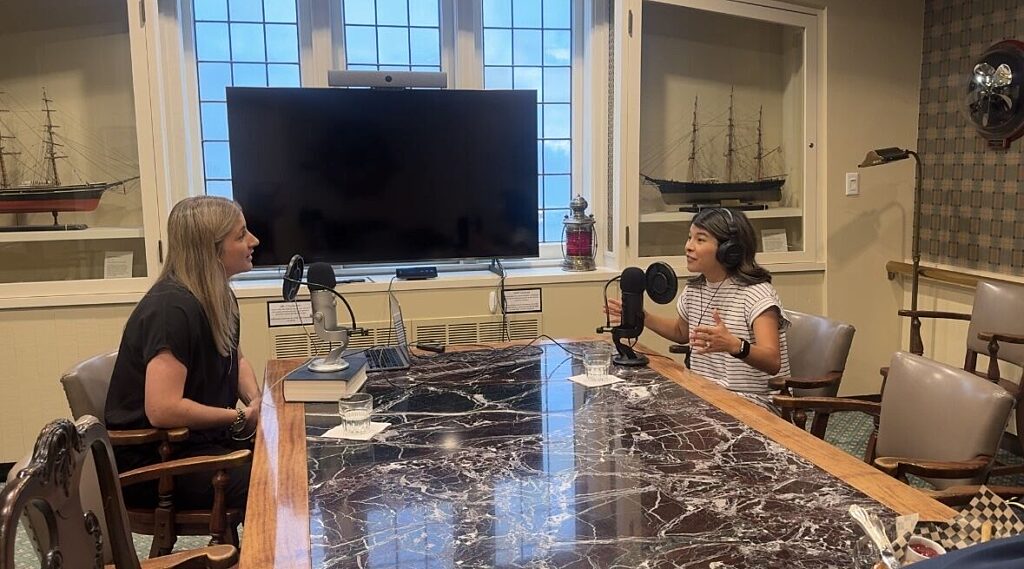
Insights 08.06.2025
The Weekly Podcast with Rachel Horgan
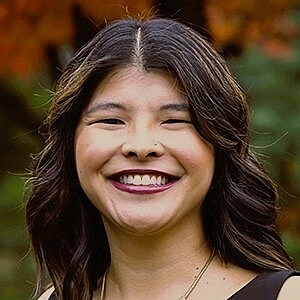
Tess Wakasugi-Don
Principal
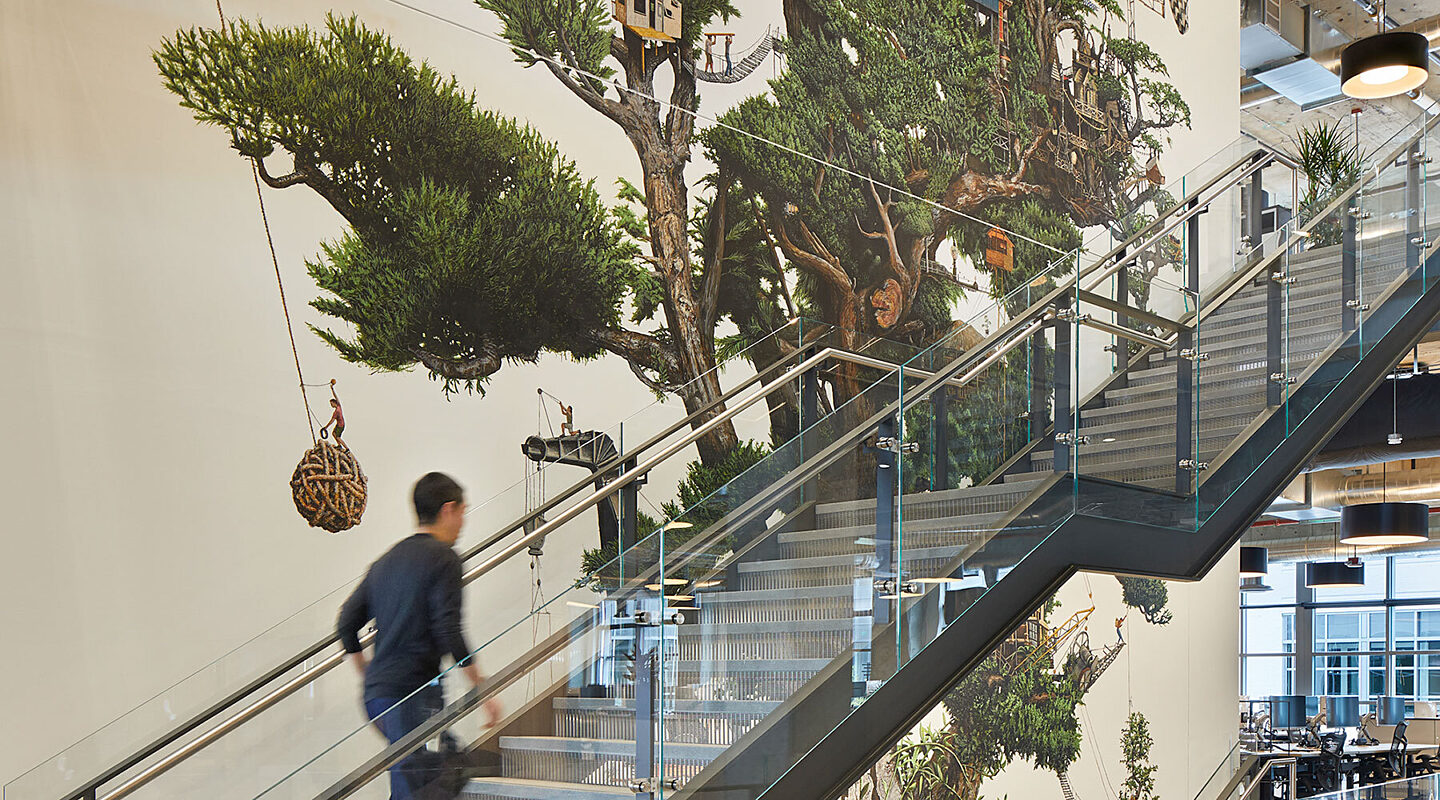
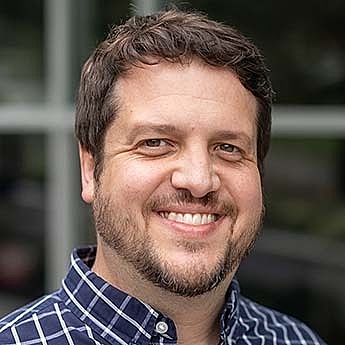
From three-story murals that expand an office’s stairwell to framed photography lining a healthcare clinic’s hallway, artwork is often the magic and final ingredient that brings the built environment to life. Artwork inspires, creates a sense of place, and promotes conversation and wonder.
Whether sculpture, paint, digital, or embedded architecture, art presents unique construction concerns that must be carefully managed. Each piece becomes a project within a project and requires sensitivity and flexibility.
No matter what challenges occur, our goal remains the same: make it work.
Whether sourced from an Owner’s personal collection or procured through a competitive RFP process, there are three must-dos for working with art.
Art takes time, and the creation process and outcome are rarely precise. GLY engages with artists as early as possible to outline code issues, schedule, structure, attachment points, MEP connections, installation procedures, and protection needs. At the same time, we keep the plan flexible and expect curveballs along the way.
In a perfect world, Owners select the artist and artwork before design is complete, we plan the details early, and everyone holds their dates. The artist knows the essential dates to confirm final dimensions, connection details, and installation, and has months to focus on the creative process. Work falls within the main permits vs. revised submittals. And every designer and trade partner performs their work within the main project—concrete, waterproofing, plumbing, landscape, and so on. This is the ideal scenario, and one to aim for as much as possible.
Artists tend to be contracted by Owners rather than the General Contractor, but it's still the GC’s construction site until turnover. Safety is our top priority, and since many artists aren't accustomed to active construction sites, training and supervision are essential. If artists perform work on an active jobsite, we coordinate access, lighting, clean spaces, and hydration while protecting adjacent finishes by other trades.
Every piece of art has a story. Every installation does, too! Here are a few examples.
Dreamer, a 14’x18’ painted aluminum sculpture at 520 Westlake, is a recent addition to South Lake Union. Designed by local artist Patti Warashina and commissioned by Vulcan Real Estate, this larger-than-life installation of a woman and two fish sits atop a stormwater pond in the building’s outdoor public plaza, creating a joyful yet calm atmosphere.
The process began with early design integration and proactive planning. With Warashina’s clear vision and 18-inch model, we strategized every detail before a shovel hit the ground. By working with the artist, the fabricator/installer, and the extended project team from day one designing plinths and planning for waterproofing, landscaping, lighting, and every other element, the final sculpture fit perfectly on installation day.
Ready to move into her new home earlier than needed, Dreamer sat patiently in storage for six weeks. Pushing installation to the latest possible date reduced the risk of damage to the prized artwork. Dreamer made her grand entrance one month before Temporary Certificate of Occupancy [TCO].

Warashina, Patti. Dreamer. Installation photo [left]: Ross Leventhal, NBBJ. Final photo [right]: Sean Airhart, NBBJ.
Expedia Group’s Seattle Campus overlooking Elliott Bay provides an attractive, inspiring workplace, graced by four large murals by in-demand New York and Boston artist Ethan Murrow. Some take up one level, and others rise to three levels alongside communicating stairs. Most were drawn by pen directly onto drywall surfaces, guided by projected outlines. Portions were then painted.
Murrow was chosen for artistic excellence and aesthetic. Think whimsical characters and pastoral wonderlands! He and 13 assistants—a mix of local Seattle artists, former students, and his current assistants—worked on site in marathon paint sessions when their complicated university schedules allowed. They typically drew and painted in the later afternoon and evening, so GLY provided night shift staffing and lighting. Tents with positive air pressure covered the work areas to keep dust away.
The communication stair murals were a particular challenge, as the stairs were within one to three inches from the murals. Removing glass guardrails and installing scaffolding allowed the artists to reach each space safely and comfortably.

Murrow, Ethan. The Orchestra. Final photo [right] by Ben Benschneider.
Sometimes art finds its home as an integral component of a building’s structure. There Is Another Sky [also commissioned by Vulcan Real Estate] is a prime example, with colorful shapes embedded throughout 3,000 square feet of glass canopy high above a public breezeway galleria between Amazon office buildings Bigfoot and Nessie.
Artist Spencer Finch’s kaleidoscope-like masterpiece creates a natural experience in the heart of the city. Overlapping colors mimic the leaves of a forest, the sound of chirping crickets rises subtly from hidden speakers alongside a flowing river, and over 100 ground level LEDs mimic fireflies in flight.
Each panel includes two standard glass plates that sandwich a plastic interlayer with Finch’s design. Similar interlayers are typical for any glass canopy [minus the art] to provide rigidity and prevent breakage.
GLY worked with Finch to view mocked-up panels onsite in varying day and night conditions so he could achieve the right effect. Then we helped coordinate with the glazing manufacturer, who assembled the 90 unique panels. Each was installed according to a specific grid rather than as interchangeable pieces.
The project emphasized the importance of test prints and mock-ups. For example, an artist's work often looks just-right on a screen but low-resolution files or formats pixelate when printed on large panels.
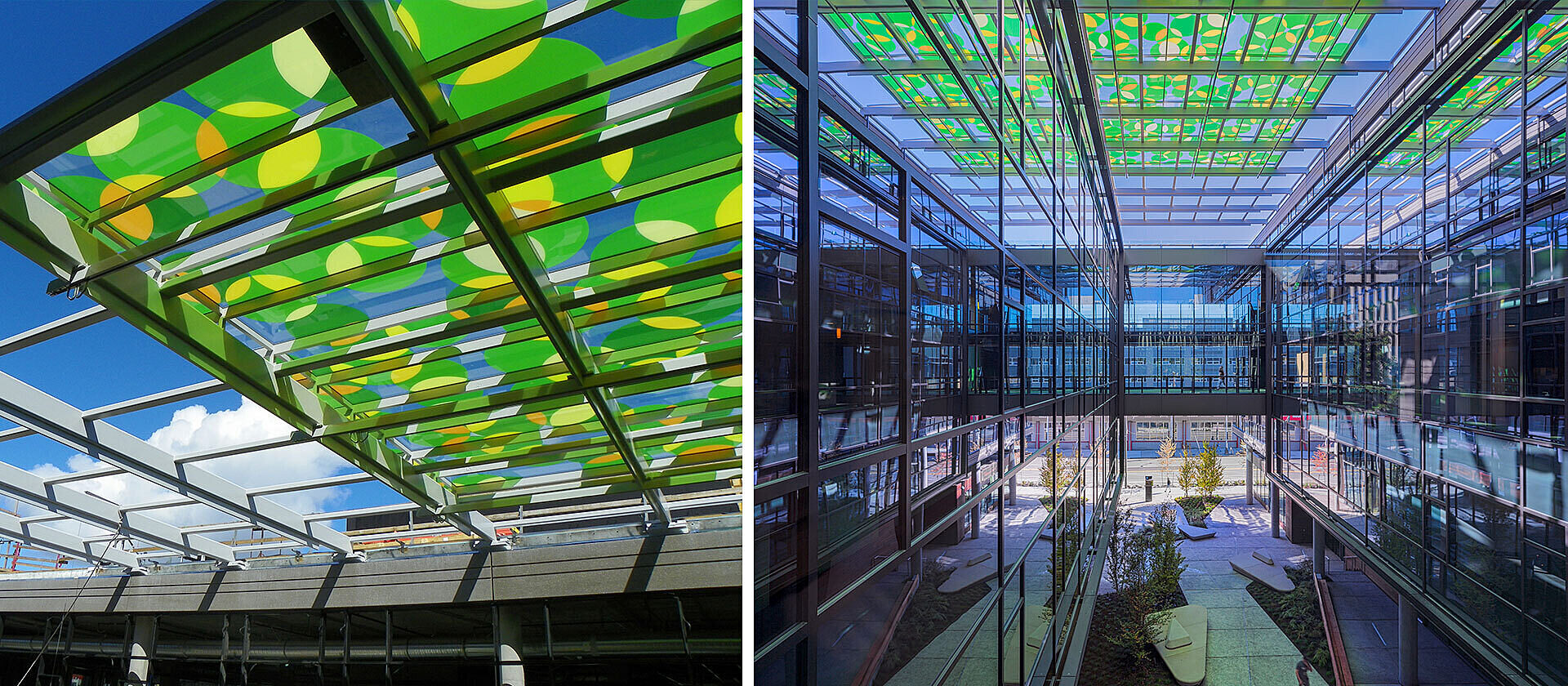
Finch, Spencer. There is Another Sky. Final photo [right]: Sozinho Imagery.
Wedgewood is a life-sized painted ceramic buck, created by artist Petronella Fursman and a treasured Rowley Properties heirloom. Former CEO Skip Rowley bought Wedgewood at a fundraising auction with the idea of placing it outside on the Tibbets Creek Greenway, but it soon became clear Wedgewood needed indoor protection. After years overseeing many meetings in one of the company’s conference rooms, Wedgewood moved to its forever-habitat in Rowley's new 2005 Poplar office building in Issaquah, which is leased to REI.
The relocation was a labor of love for GLY’s crew. After a discussion with the Rowley team, we determined that moving it ourselves, with our own truck and team, would be the safest way to go. After wrapping, hoisting, and securing the piece on the truck in the wee hours of the morning, the driver carefully drove the precious cargo to its new home, unloading and placing Wedgewood with equal care.
If you visit REI's office, you'll find the famous buck in a position of honor—a recessed alcove in the main entry hall.
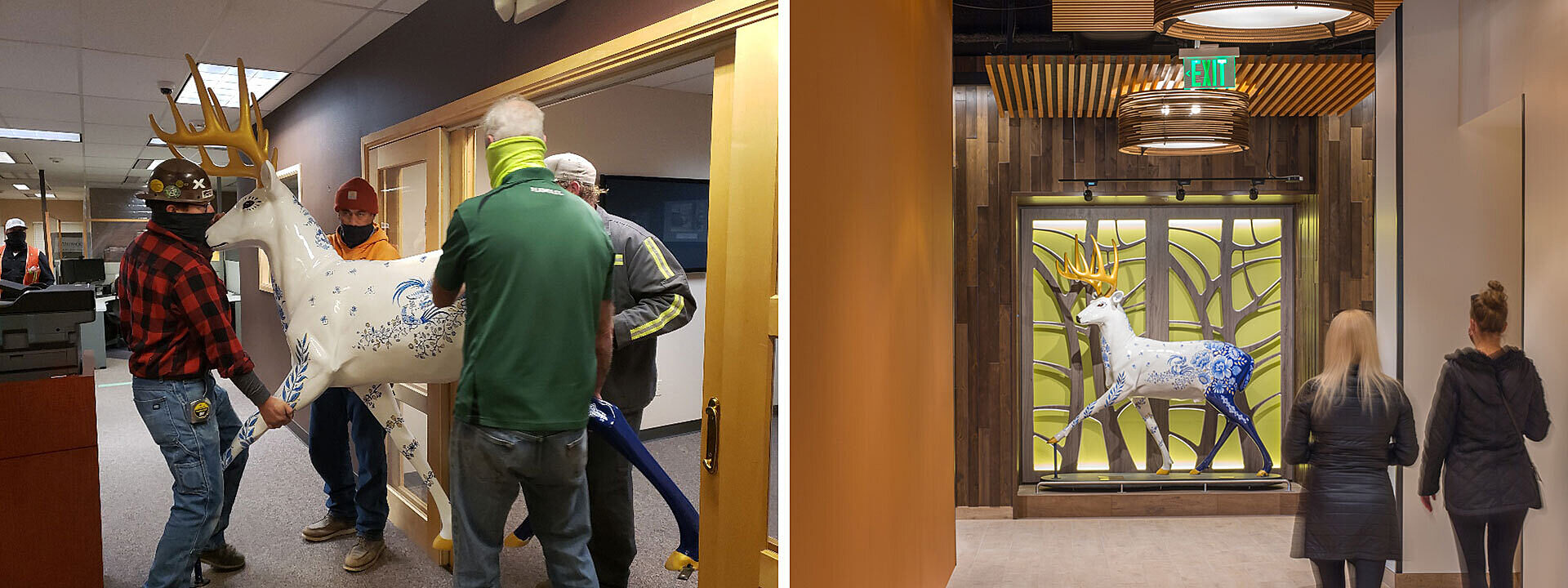
Fursman, Petronella. Wedgewood. Final photo [right]: Lara Swimmer Photography.
There’s always something in the works! We can’t wait to share the latest additions to the community—and the backstories of how they came to be.

Project Executive
LEED Green Associate
Kyle joined the GLY team immediately after earning a BS in Construction Management from the University of Washington in 2006. His honesty and affability have been a mainstay, and he takes a forthright approach to resolving issues and ensuring client satisfaction. After all these years, he still looks forward the unique challenges that come with each individual project and appreciates that no two days are ever alike. While things keep him on his toes at the jobsite, Kyle unwinds by listening to his favorite CDs and records or going to live concerts. Music just sounds better when it’s an experience!